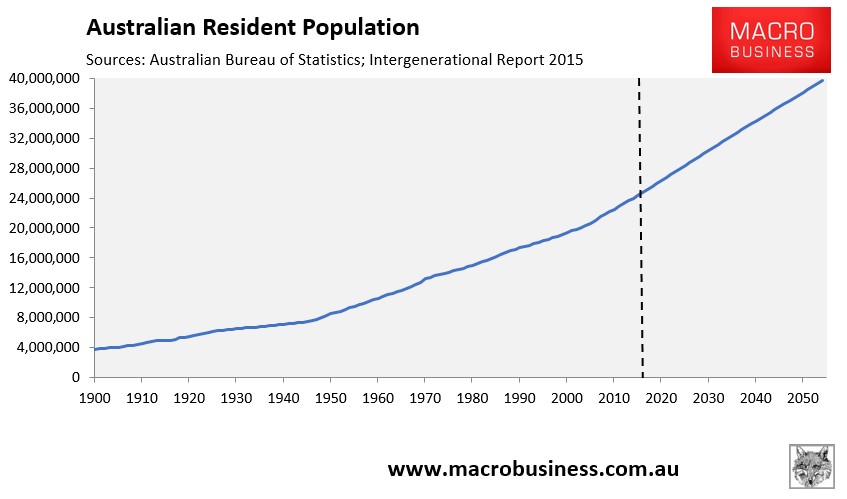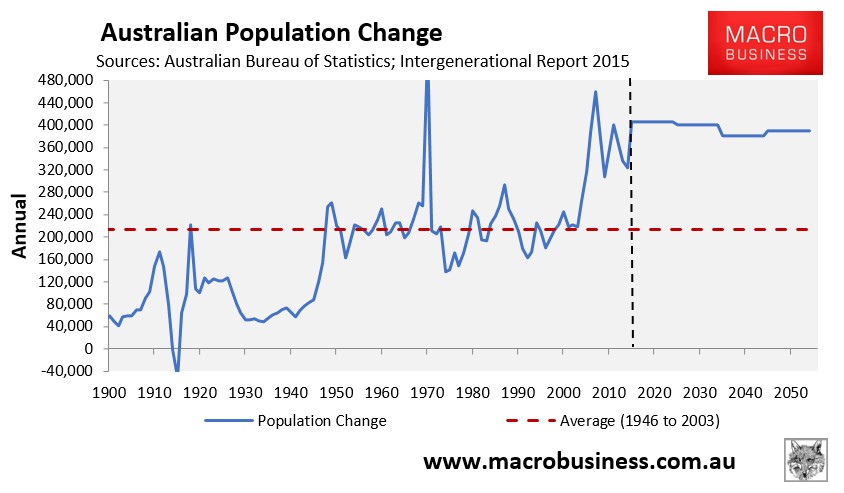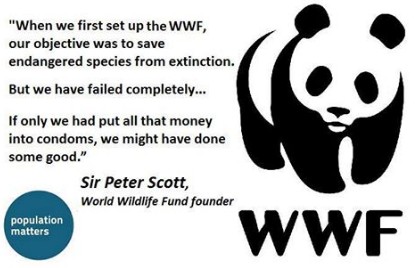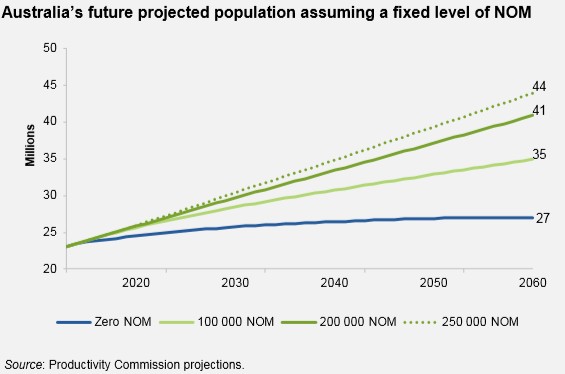Australia’s population growth has for more than a decade lead the world and is on track to nearly double the nation’s population mid-century to around 40 million people:

And this will be driven by annual population growth that is nearly twice as high as the post-war average, primarily due to mass immigration:

While this site often talks about the deleterious impacts of mass immigration on living standards in the big cities (think packed trains, worsening traffic congestion and reduced housing affordability), Australia’s natural environment is also being placed under acute strain, as noted by the latest federal government State of the Environment report. From The Conversation:
Australia’s population growth and economic activity continue to pose major environmental challenges, according to a comprehensive five-yearly stocktake of the country’s environmental health.
The federal government’s State of the Environment 2016 report (prepared by a group of independent experts, which I chaired), released today, predicts that population growth and economic development will be the main drivers of environmental problems such as land-use change, habitat destruction, invasive species, and climate change…
We continue to lose agricultural lands through urban encroachment. Over the past five years land-clearing rates stabilised in all states and territories except Queensland, where the rate of clearing increased.
Coastal waterways are threatened by pollutants, including microplastics and nanoparticles…
Population growth in our major cities, along with Australia’s reliance on private cars, is leading to greater traffic volumes, which increase traffic congestion and delays as well as pollution…
This isn’t the first environmental study to draw the direct link between population growth and environmental degradation.
In 2010, the Australian Conservation Foundation (ACF) called for Australia’s population to be stabilised and nominated human population growth as a “key threatening process” to Australia’s biodiversity.
Well-known environmentalist and former Australian of the Year recipient, Professor Tim Flannery, has estimated that the long-term human carrying capacity of the Australian continent and Tasmania might be as low as 8 million to 12 million people and has many times called for the nation’s population to be stabilised.
In 1994, when Australia’s population was just under 18 million, the Australian Academy of Science (AAS) convened a symposium on the future population of Australia. Its analysis was extended to Australia’s resources of water, minerals and arable land, and the interactions between present lifestyle and present environmental damage, and between future expectations and the costs of increasing population.
The AAS cautioned that “if our population reaches the high end of the feasible range (37 million), the quality of life of all Australians will be lowered by the degradation of water, soil, energy and biological resources” and concluded that “the quality of all aspects of our children’s lives will be maximised if the population of Australia by the mid-21st Century is kept to the low, stable end of the achievable range, i.e. to approximately 23 million”. Just 22 years later, Australia has already breached 24 million, thus exceeding the AAS’ recommended maximum population.
International organisations and commentators, too, have raised alarm at population growth’s impacts on the environment.
The World Wildlife Fund (WWF) has nominated human population growth as the key risk factor for endangered species, noting that “the current rate of extinctions is 100 times what would be considered normal without the impact of human activity… more of us means more of that” (see below graphic).

And recently, legendary documentary maker, David Attenborough, nominated population growth as the most fundamental issue facing the world.
The fact of the matter is that there are few better policy solutions to protect Australia’s environment than limiting population growth and abandoning plans for a ‘Big Australia’, which necessarily means significantly cutting immigration and stabilising the population.
Australia’s birthrate of 1.8 is below replacement level and the nation’s population would stablise at 27 million by 2060 under zero net overseas migration, according to the Productivity Commission. By contrast, if current mass immigration setting are maintained, Australia’s population will exceed 40 million – a difference of at least 13 million people (see below chart).

The above does also highlight the complete and utter negligence of The Australian Greens. Despite their purported concerns for the environment, The Greens have remained deafly silent on Australia’s world-beating immigration program and have refused to argue the case publicly for a smaller and more sustainable population for Australia.
With the debate over immigration heating-up both in Australia and abroad, it is high time that The Greens live up to their name and advocate for a smaller population trajectory on behalf of Australia’s environment.

